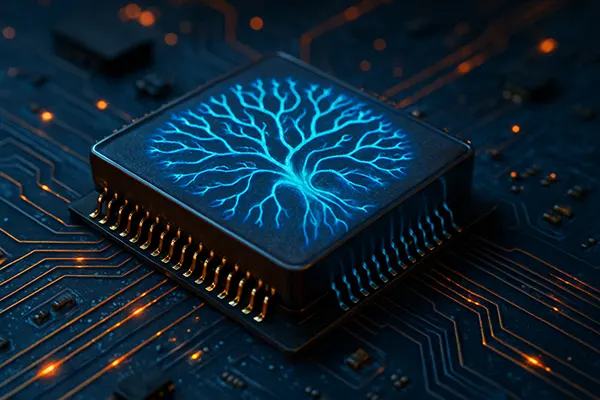Neuroprocessors of the New Generation: How Artificial Synapses Are Transforming Computational Technologies

Modern computing is rapidly evolving, with neuroprocessors standing at the forefront of a technological revolution. These innovative components replicate the synaptic behaviour of the human brain, allowing machines to learn, adapt, and make decisions in real time with unprecedented efficiency. As artificial synapses become integral to next-gen processors, they are not only transforming performance capabilities but also redefining the architecture of intelligent systems across industries. Below, we examine how this groundbreaking development is shaping the future of computation and what implications it holds for science and technology in 2025.
Understanding the Function and Purpose of Artificial Synapses
Artificial synapses aim to replicate the functionality of biological synapses, which are essential for signal transmission and learning in the human brain. These components, often made from materials like phase-change alloys or memristive substances, adjust their conductivity based on prior electrical activity. This behaviour allows them to “remember” patterns, enabling advanced machine learning directly within the hardware, without the need for constant cloud computation.
One of the most critical benefits of these artificial synapses is their ability to execute neuromorphic computing. Unlike traditional binary computing systems, neuromorphic processors use parallel signal processing, consuming far less energy. For example, IBM’s TrueNorth and Intel’s Loihi chips demonstrate how neuroprocessors can perform complex pattern recognition and sensory processing with minimal power.
In February 2025, researchers at Stanford University and Korea Institute of Science and Technology (KIST) reported significant progress in organic artificial synapse design, enhancing flexibility, biocompatibility, and speed. These breakthroughs pave the way for wearable neural interfaces, real-time adaptive robotics, and highly efficient AI systems embedded directly in hardware.
Applications of Neuroprocessors in the Modern Technological Ecosystem
Neuroprocessors are now actively used in edge computing applications, where rapid decision-making is crucial. Devices such as autonomous drones, self-driving vehicles, and medical diagnostics systems benefit from localised, low-latency processing powered by neuromorphic chips. This means decisions can be made without routing data back to centralised servers, reducing time delays and preserving bandwidth.
Healthcare is another area experiencing dramatic change due to these processors. Neuroprocessors allow advanced prosthetics to adapt to patients’ movement patterns or predict muscle signals with greater precision. Start-ups like BrainCo and Neurotech Solutions are leading this field, building devices that merge artificial neural processing with biological feedback systems.
Additionally, security systems based on facial or voice recognition now use artificial synapse-powered chips to learn and adapt in real time, significantly improving recognition accuracy. These processors can detect anomalies or fraudulent patterns, contributing to more robust cybersecurity and surveillance systems.
Materials and Architecture Behind the Evolution of Neuroprocessors
The materials used to build artificial synapses significantly impact their performance. In recent years, advances in 2D materials such as graphene and molybdenum disulphide have been instrumental. These substances allow for ultra-thin, highly conductive, and durable synaptic devices that are not only compact but also compatible with flexible electronics.
Another significant architectural shift has been the transition from conventional von Neumann models to neuromorphic designs. In neuromorphic architectures, memory and processing units are interwoven, eliminating the bottleneck caused by constant data transfer. This configuration mimics the brain’s structure, allowing for faster and more efficient computations.
As of early 2025, companies such as Samsung and TSMC are prototyping chips with over one million artificial synapses, integrated into scalable neuromorphic arrays. These chips demonstrate high-density data processing with minimal power usage and are expected to revolutionise fields requiring real-time data interpretation, such as finance and autonomous robotics.
Challenges in Development and Commercialisation
Despite their promise, neuroprocessors face several challenges before they can achieve mass adoption. Fabricating artificial synapses at scale while maintaining uniformity and reliability remains technically demanding. Variations in material properties can lead to inconsistent learning behaviours, which is particularly problematic in safety-critical applications.
Moreover, integrating these chips with current digital infrastructure requires redesigning both hardware and software environments. Developers must create new algorithms optimised for neuromorphic architectures, which differ significantly from those used in classical machine learning models.
There are also ethical considerations concerning the deployment of such powerful systems. Questions around autonomy, decision transparency, and potential misuse in surveillance or military contexts are being actively debated by experts and regulatory bodies, signalling the need for strong governance frameworks as the technology matures.

The Future of Cognitive Hardware and Global Research Trends
The global race to develop next-gen cognitive hardware has accelerated. In 2025, leading institutions such as MIT, ETH Zurich, and the University of Tokyo are investing heavily in collaborative research focused on artificial synapses. These partnerships are producing open-access platforms to encourage transparent innovation in the field.
Government and industry players are also recognising the transformative potential. The European Union’s Horizon Europe programme and the U.S. National Science Foundation have launched dedicated funding calls to support research on bio-inspired computing and neuromorphic systems, ensuring that these technologies align with ethical AI principles.
Looking ahead, neuroprocessors are likely to underpin the next era of AI: systems that learn continuously, adapt in real time, and operate with human-like efficiency. Whether embedded in smart home devices, integrated into neuroprosthetics, or guiding space exploration, artificial synapses will become essential components of future cognitive machines.
Impacts on Society and Human-Machine Collaboration
The societal impact of neuroprocessors could be profound. In education, adaptive learning systems powered by neuromorphic chips may tailor instruction in real time to suit individual learning styles. In urban environments, traffic management systems can use these processors to optimise flow based on dynamic conditions.
Human-machine collaboration is also expected to reach new heights. Devices that “think” in a brain-like manner may anticipate user needs or adjust behaviour based on subtle cues. This could lead to more intuitive human-computer interfaces and increase accessibility for individuals with disabilities.
Finally, as artificial synapses become more ubiquitous, new forms of symbiosis between humans and machines will emerge. These relationships could redefine productivity, creativity, and decision-making, ultimately reshaping not just technology, but how we interact with the digital world around us.




